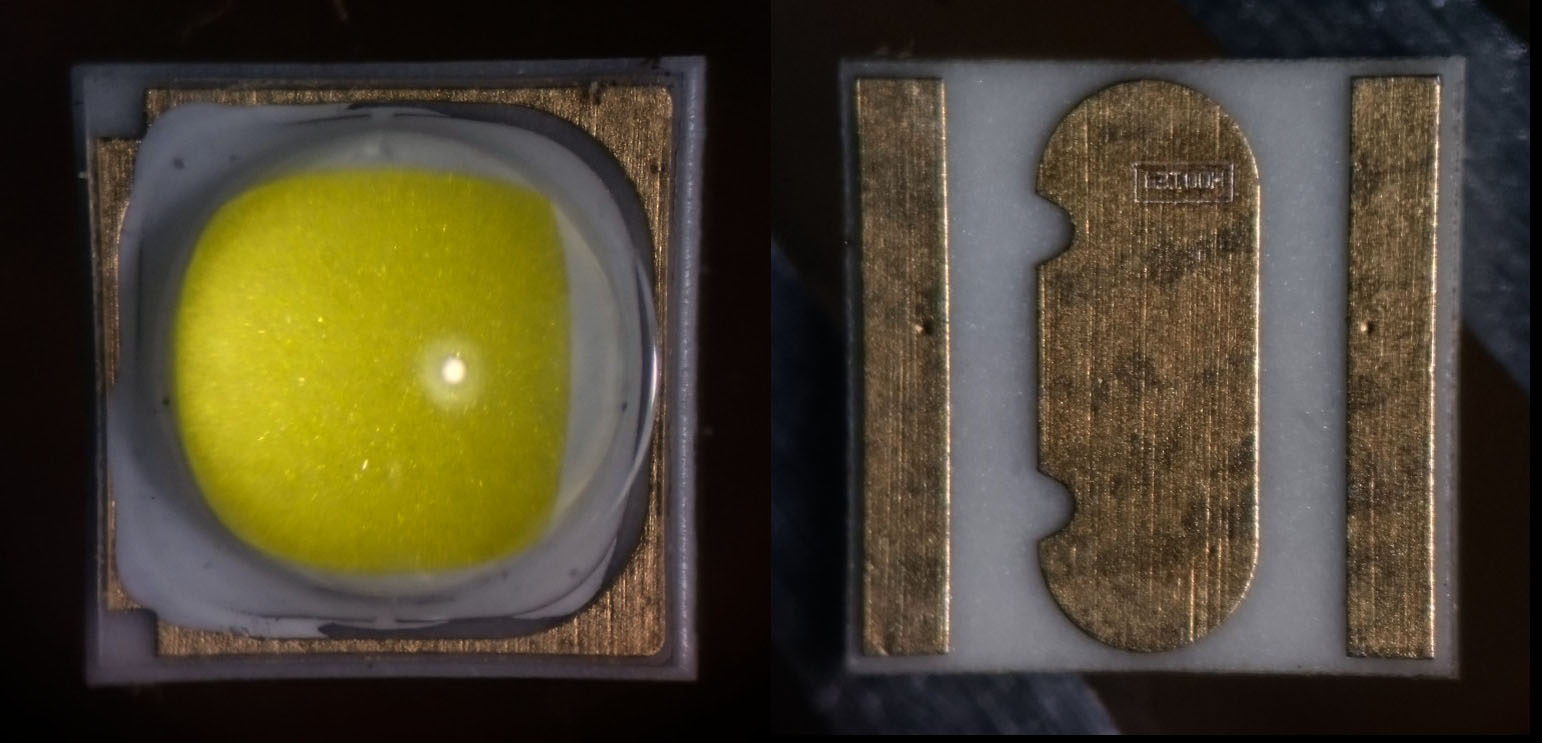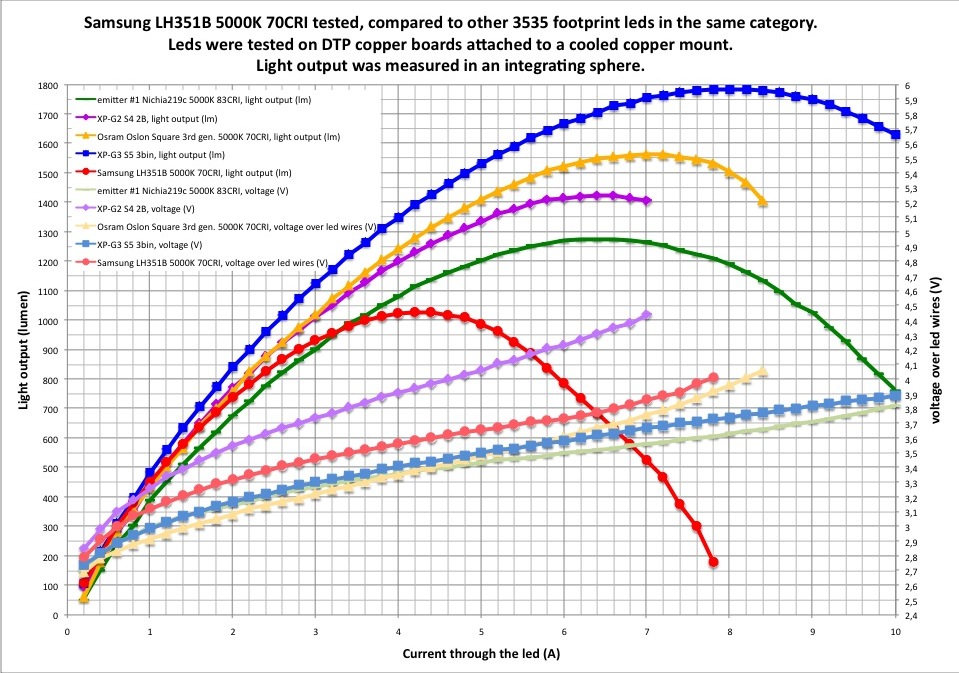
I really have no idea where to obtain the newest generation of 3535 footprint Samsung leds (same goes for some promising LG leds), but led4power managed to get some samples of the highest bin of the LH351B series and sent them to me for testing. To immediately destroy any hope about this: he tried to dedome them and it did not go well. So leftover is some output testing to see how they keep up with the other latest leds that I have tested.
He sent me samples of the 5000K 70CRI type and the 4000K 80 CRI type. This test is of the 5000K 70CRI type. I did an output test and in the chart the results are compared to older tests results of similar 3535 footprint leds: the Cree XP-G2 S4 2B, the Cree XP-G3 S5 3-bin, the Nichia 219C 5000K 80CRI, and the 3rd gen. Osram Oslon Square 5000K 70CRI.
The test was done like all my more recent emitter tests. I described it in detail in my XP-L test. , with two minor differences that should not matter significantly for the results: I used my Integrating sphere no. II instead of no. I, and for the current I used a clamp meter, which appears to measure 0.1A lower than the power supply current-reading that I used before.
In summary: 1) just one led was tested, reflowed on a DTP copper board (XP-Noctigon 16mm) 2) I used my large version II integrating sphere with high quality luxmeter, 3) the output numbers and voltages were measured with the led close to 'steady state' for each current, so warmed up and settled, you should be able to get these numbers in a well heatsinked flashlight. Mind that these are output numbers of the bare led, in a flashlight there will be losses from light obstructions, lens and optic, 4) output is in 'djozz-lumen' defined as 1/550 of the output of my Sunwayman D40A on high setting, which I hope is close to the real lumen, but at least is consistent over all my emitter tests done in integrating spheres.
Here's the chart:

What can be seen:
*up to 1.5A the output is keeping up well with the other modern leds, but at higher currents the output dives firmly under the others. The thermal resistance of the Samsung as listed in the data-sheet is not significantly higher than the other leds (=4K/W , as opposed to 3.6 for the Oslon Square, 3 for the XP-G3, 4 for the XP-G2, 4.2 for the 219C), so I did not expect this.
(a possibilty for a test error is a bad reflow or mounting, but I checked before and after the test and I did not see any signs of that. I always reflow the leds that I test very carefully, at the right temperature and using a bit more solder paste than strictly needed to be sure that the led is connected well over the entire surface of the solder pads)
*the voltage of the led is conveniently low, but not as low as the newest leds from the other manufacturers.
Conclusion.
This newest Samsung LH351B led, (at least this sample and in this single test, testing a bad one is always a possibility) does not do anything better than the newest leds from other major manufacturers, but when used at low currents under 1.5A, it performs very decently. Perhaps if they become available for flashoholics community, the price could be attractive, and I did not check the tint, that may be particularly pleasant. I will try to build a triple at 4.5A with the 4000K 80CRI variant to get a feeling for that aspect, and report about it in this thread :-)
thanks for reading!